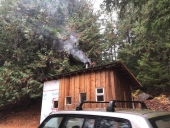
 4
4





 8
8




For all your Montana Masonry Heater parts (also known as) Rocket Mass heater parts.
Visit me at
dragontechrmh.com Once you go brick you will never go back!

 3
3




How Permies works: https://permies.com/wiki/34193/permies-works-links-threads
My projects on Skye: The tree field, Growing and landracing, perennial polycultures, "Don't dream it - be it! "
 1
1




thomas rubino wrote:Good Morning Neighbor;
Snip
Now on to your questions.
I'll start by giving you my opinion of your final question.
No, not worth the money to set up that kind of testing.
If you had all the equipment on hand, it would be fun to see what numbers you came up with.
Buying that equipment is very cost prohibitive.
The innovators have done extensive testing and fine-tuned their designs to run as cleanly and efficiently as possible while storing that heat in a mass.
Snip
 4
4











 1
1




heat your home with 80% to 90% less wood
exhaust is nearly pure steam and CO2 (a little smoke at the beginning)
the heat from one fire can last for days
you can build one in a day or two
folks have built them spending less than $20
less CO2 than natural gas or electric heat
if you buy the wood, it costs less to operate than natural gas
Invasive plants are Earth's way of insisting we notice her medicines. Stephen Herrod Buhner
Everyone learns what works by learning what doesn't work. Stephen Herrod Buhner




 4
4




For all your Montana Masonry Heater parts (also known as) Rocket Mass heater parts.
Visit me at
dragontechrmh.com Once you go brick you will never go back!
 1
1




Allen Jangula wrote:
- - - -
Being a Batch Rocket Stove, you could load it up and would burn overnight or at least an extended period of time with no one there.
 1
1




Matthew J. Wagner
Saegertown, PA, USA
https://www.matthewjwagner.com
“They will build houses and live in them, And they will plant vineyards and eat their fruitage. They will not build for someone else to inhabit, Nor will they plant for others to eat. For the days of my people will be like the days of a tree, And the work of their hands my chosen ones will enjoy to the full.” - Isaiah 65:21, 22

|
mooooooo ..... tiny ad ....
The new kickstarter is now live!
https://www.kickstarter.com/projects/paulwheaton/garden-cards
|






